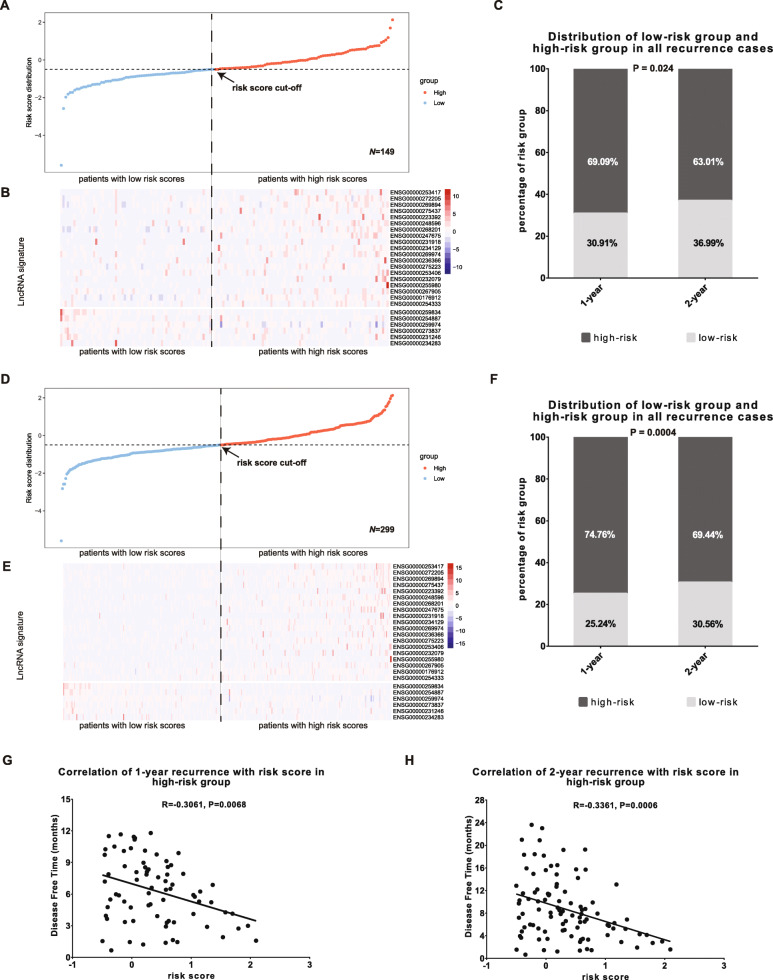Fig. 3.
Correlation analysis of the 25-lncRNA risk signature with HCC early recurrence in the validation and entire TCGA cohort. A) The 149 HCC patients in the validation cohort were ranked according to their risk scores from low to high, and divided into the low-risk group (n = 69) and the high-risk group (n = 80) by using the same risk score cut-off in the training cohort; B) The 25-lncRNA expression profile in the 149 HCC patients. The 19 risk lncRNAs were enriched in the high-risk group and the 6 protective lncRNAs were enriched in the low-risk group; C) 69.09% and 63.01% HCC patients with recurrence in 1-year and 2-year respectively were classified in the high-risk group, and 30.91% and 36.99% HCC patients with recurrence in 1-year and 2-year respectively were assigned in the low-risk group (P = 0.024); D) The 299 HCC patients in the entire TCGA cohort were ranked according to their risk scores from low to high, and divided into the low-risk group (n = 144) and the high-risk group (n = 155) by using the same risk score cut-off in the training cohort; E) The 25-lncRNA expression profile in the 299 HCC patients. The 19 risk lncRNAs were enriched in the high-risk group and the 6 protective lncRNAs were enriched in the low-risk group; F) 74.46% and 69.44% HCC patients with recurrence in 1-year and 2-year respectively were assigned in the high-risk group, and 25.24% and 30.56% HCC patients with recurrence in 1-year and 2-year respectively were assigned in the low-risk group (P = 0.0004); G and H) Correlation of risk score with 1-year (G) or 2-year DFS (H) in the recurrent HCC patients in the high-risk group of the entire TCGA cohort

